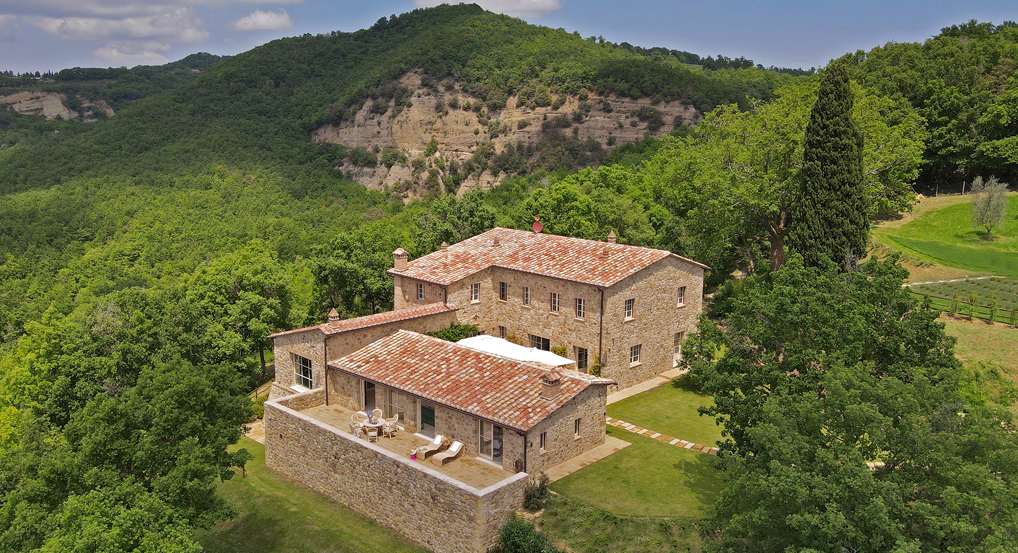
This fantastic, completely renovated structure, welcomes you to your own corner of Tuscany.
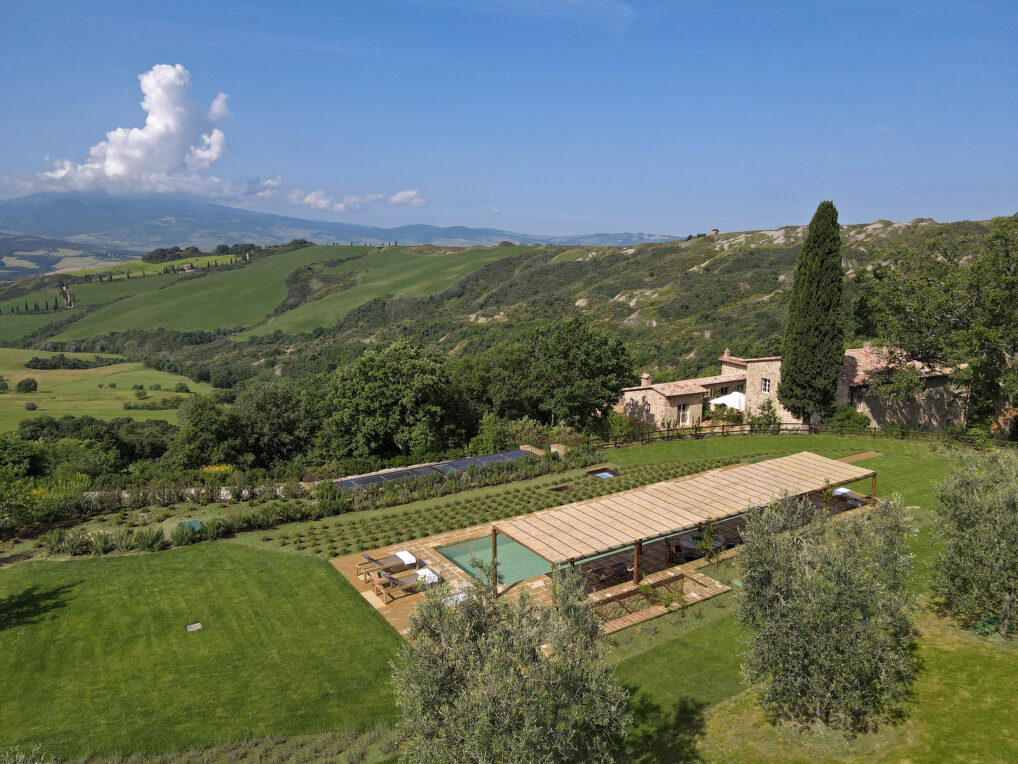
Sitting atop a sloping hill, it offers warm lighting and an incredible panorama!
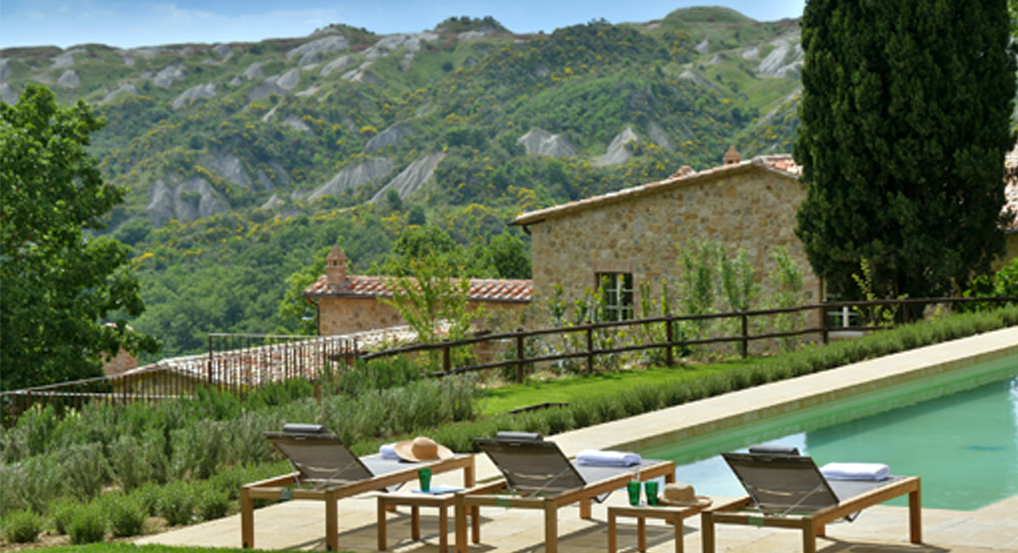
Elevated above the Gym is the outdoor pool with a fabulous view over the Val d'Orcia.
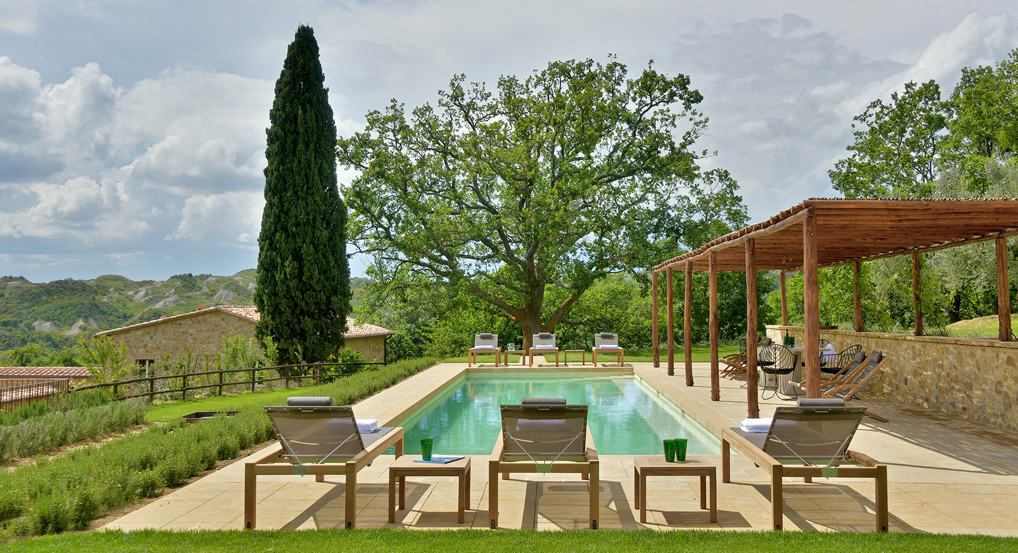
The saltwater pool, 15x4m. (13x50 ft.) is bordered by a long pergola for shade.
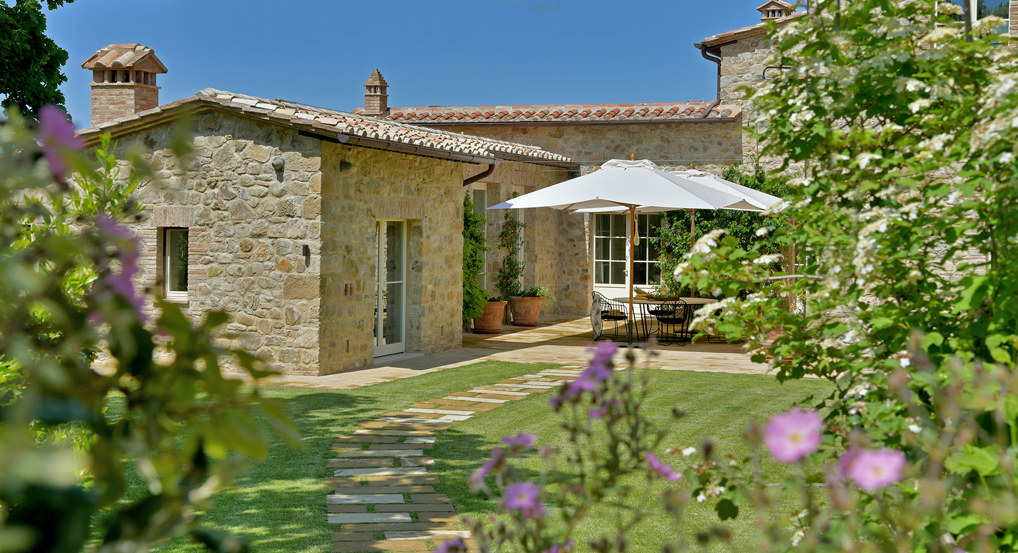
The home is wrapped around a courtyard which serves as your entry point...
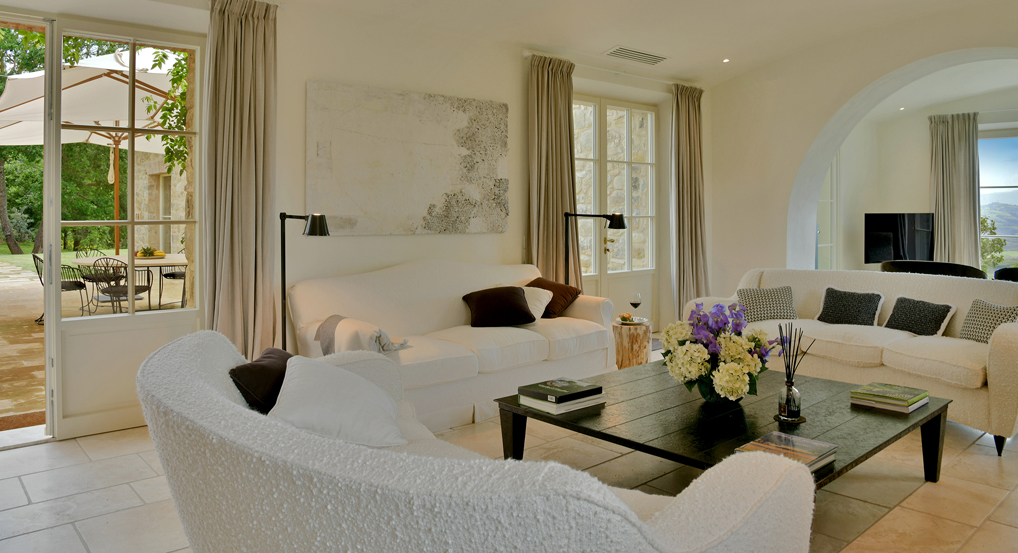
The entryway opens onto the double living room with several seating options, all modern and extremely comfortable.

In the cooler months of the year, the home features underfloor heating and a fireplace.
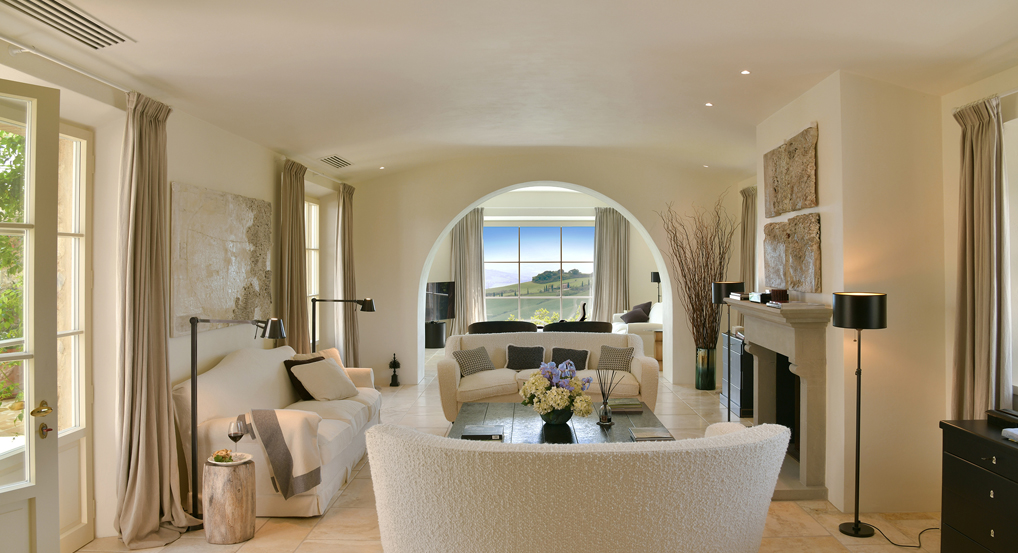
At the far end of the living room is the TV area.
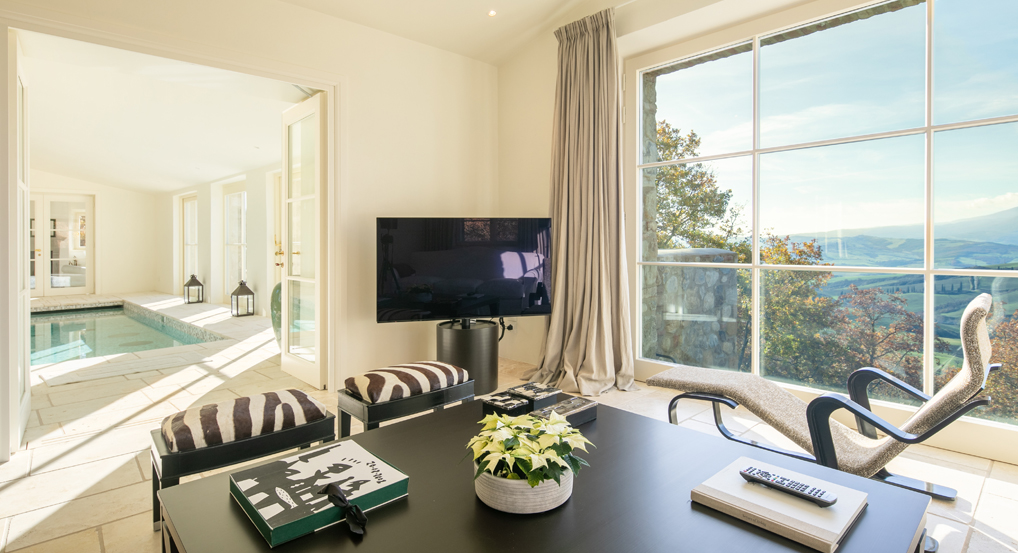
The access to the indoor pool is just off the TV area with it's panoramic window...
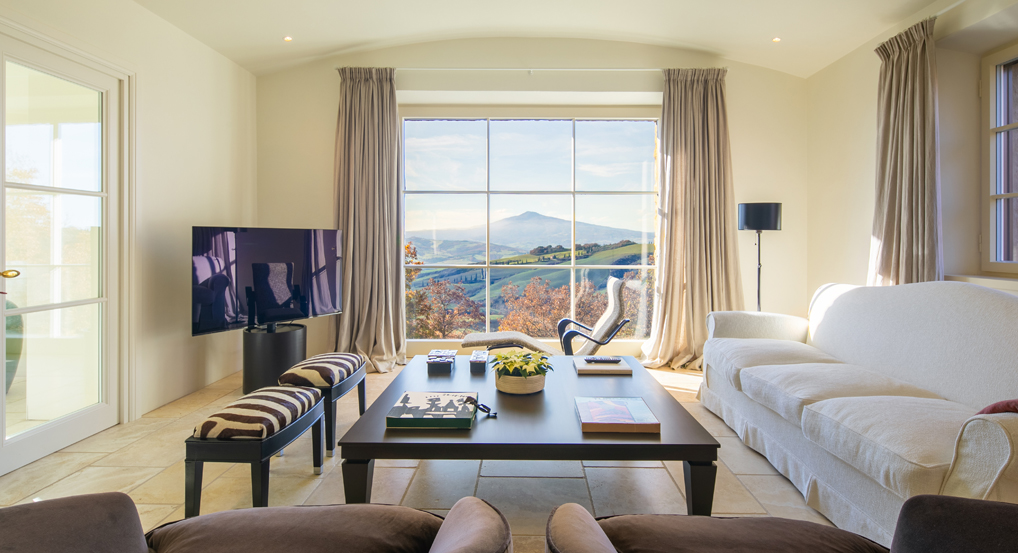
...from which you realize that the view from Santa Maria in Bellaria is postcard perfect, truly Tuscany!
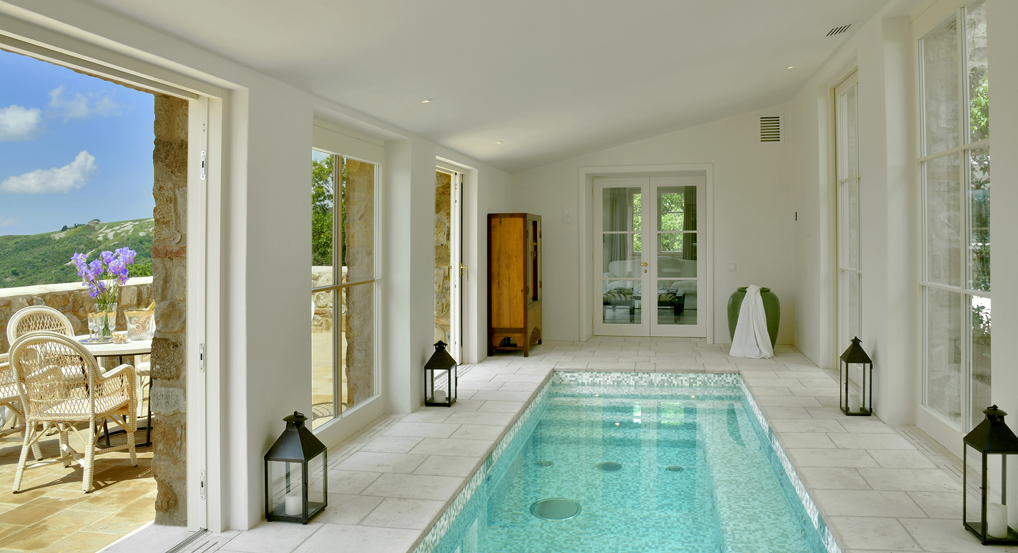
The indoor oxygen pool is heated to 90 degrees year round.
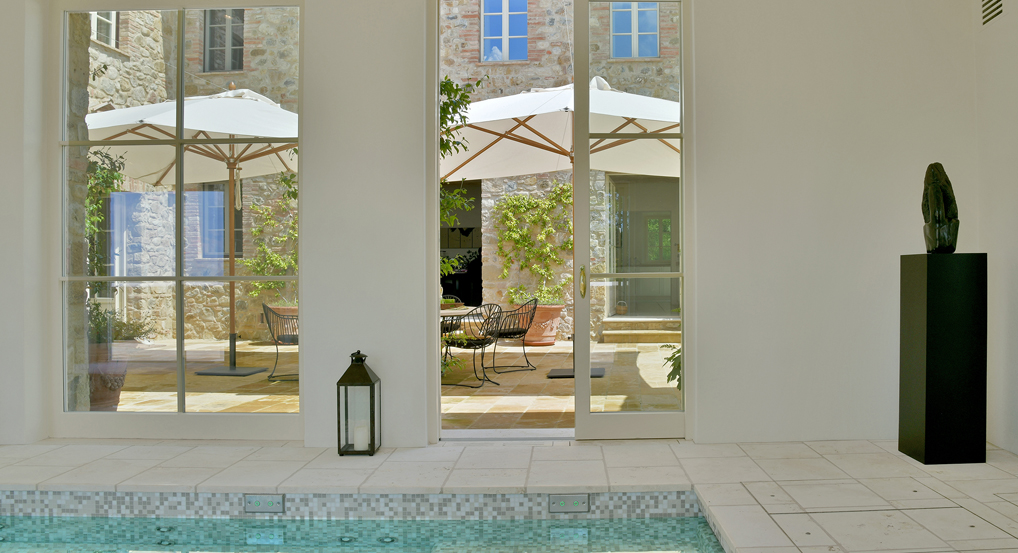
With floor to ceiling windows on both sides even wintertime swimming seems outdoors.
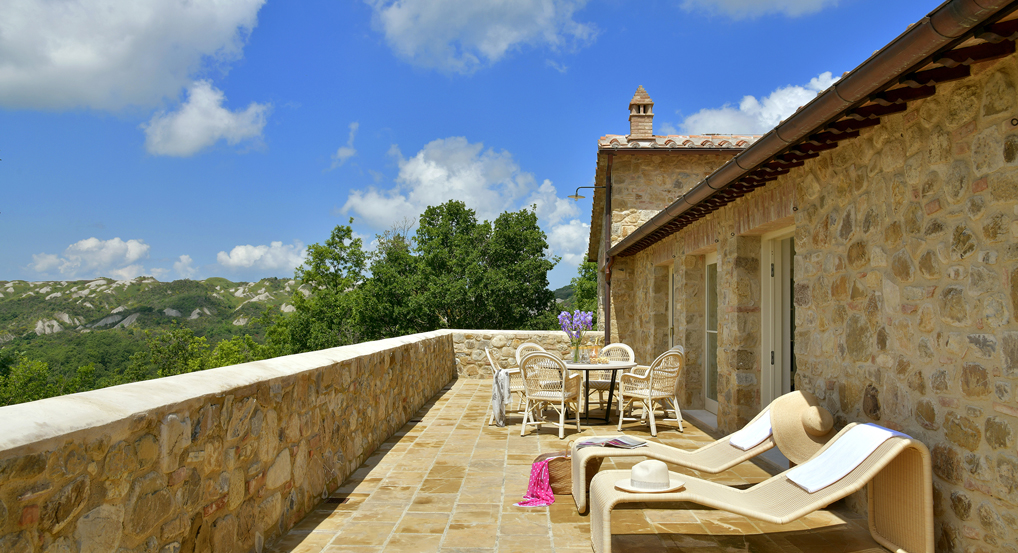
Just outside the indoor pool there is a private terrace for sunbathing.
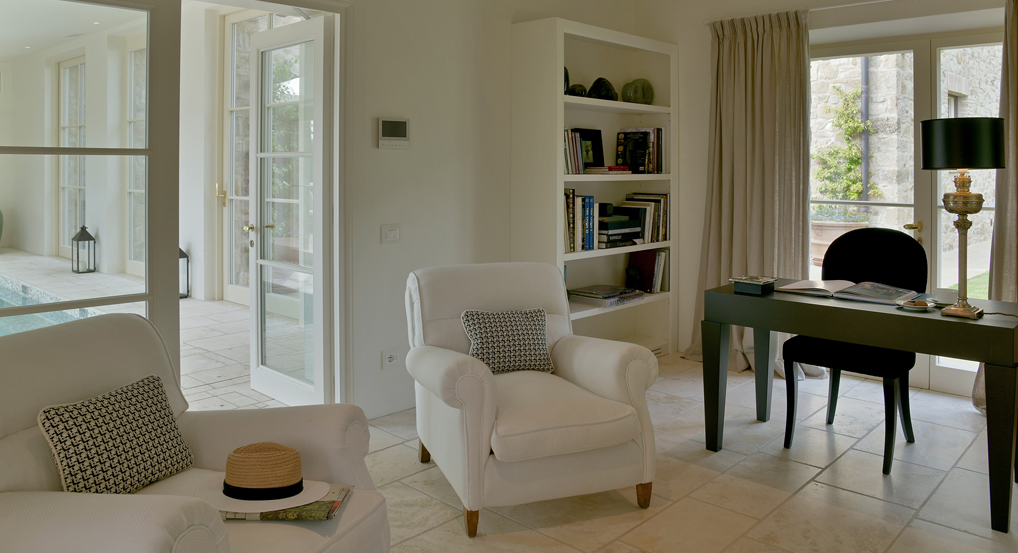
At the end of the pool room is a study/sitting room with a fireplace to relax or work if the weather outside isn't to your liking.
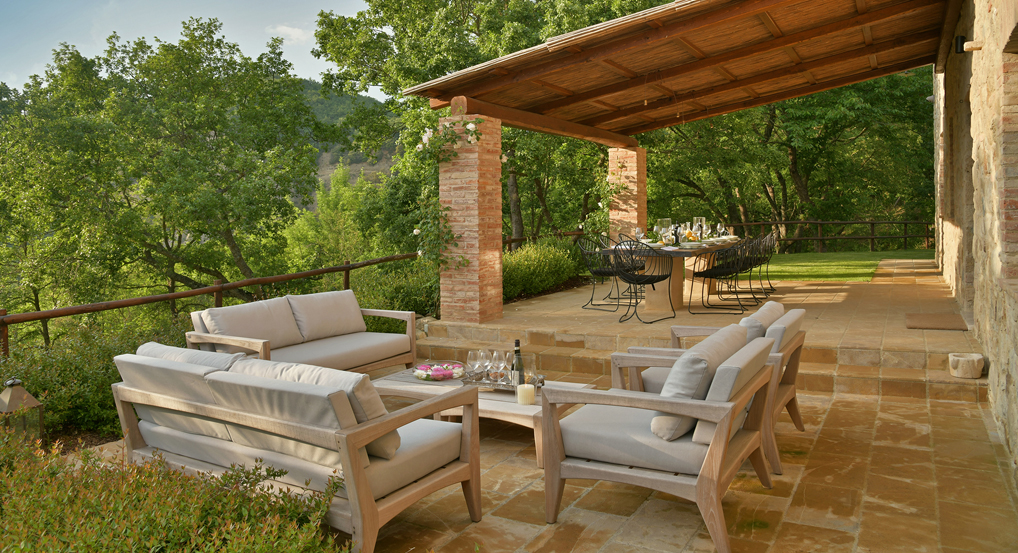
Outside the Living room are two entertainment areas. One for relax...
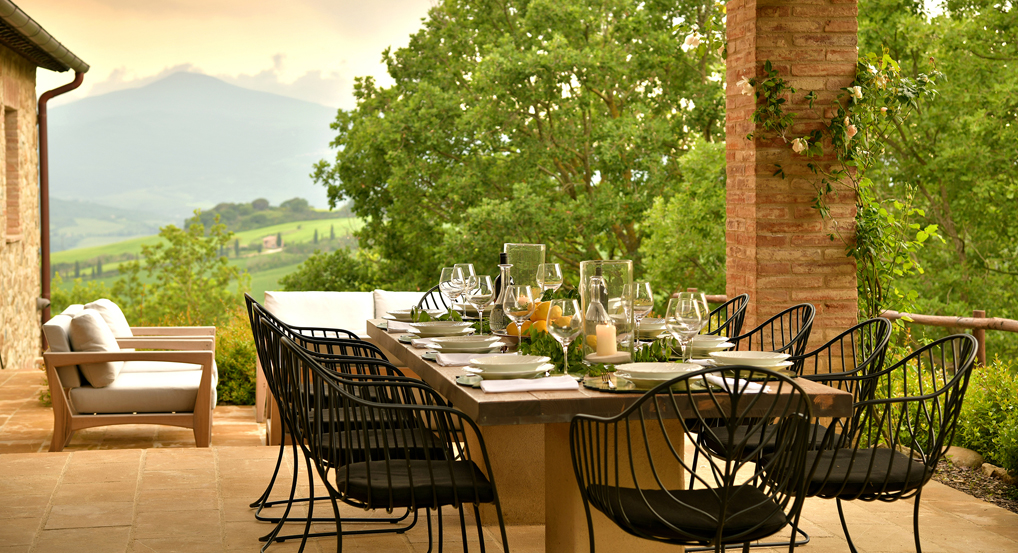
...as well as another with a beautiful dining table and chairs all designed by Royal Botania.
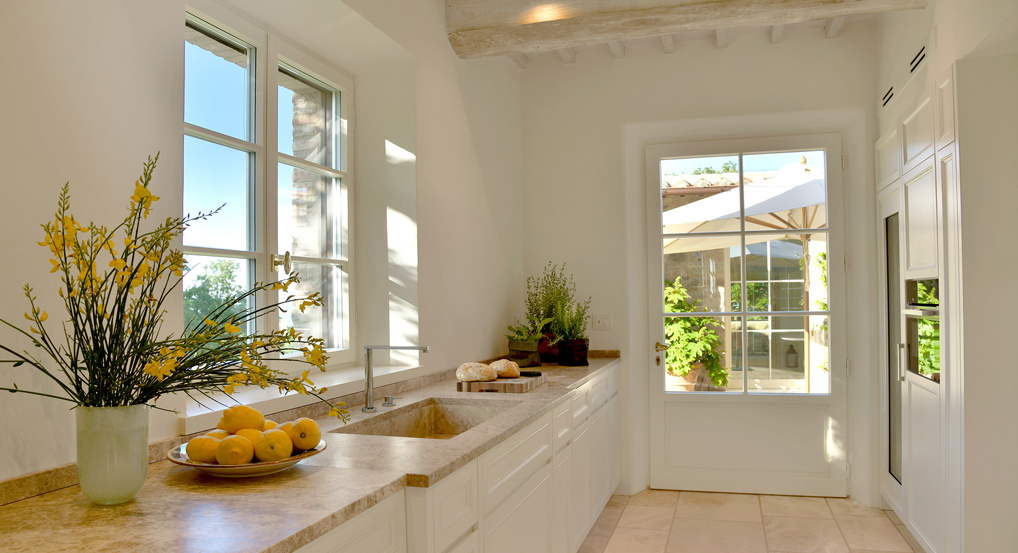
In a seperate wing of the ground floor is the kitchen/dining area.
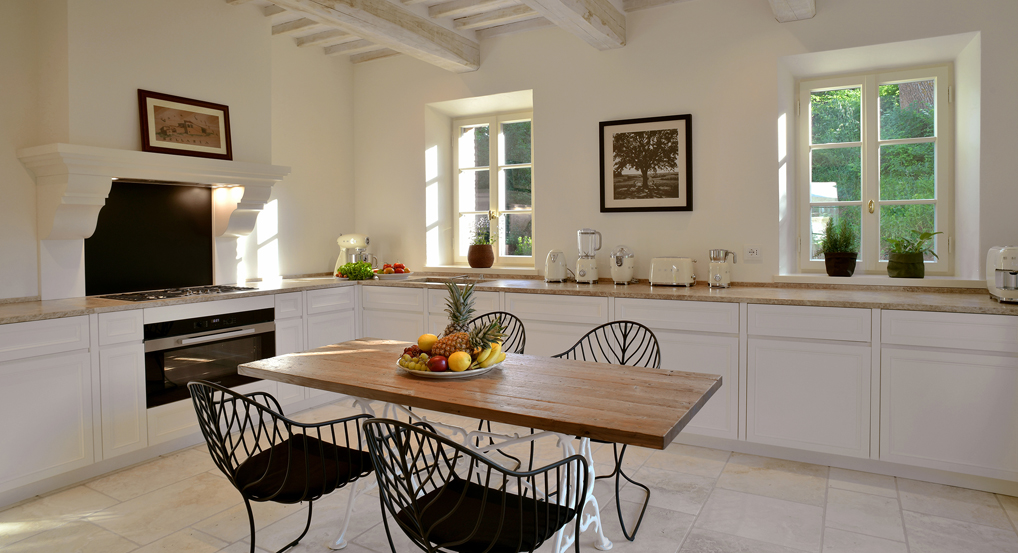
Morning breakfast can be prepared and enjoyed in the eat in area of the kitchen.
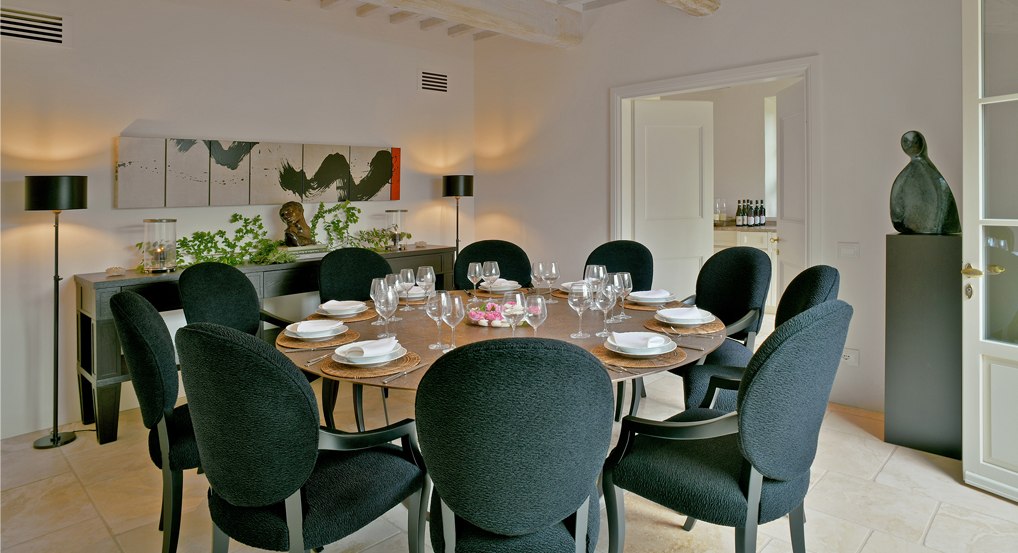
For more formal meals, the large round table is perfect for dining at home all together.
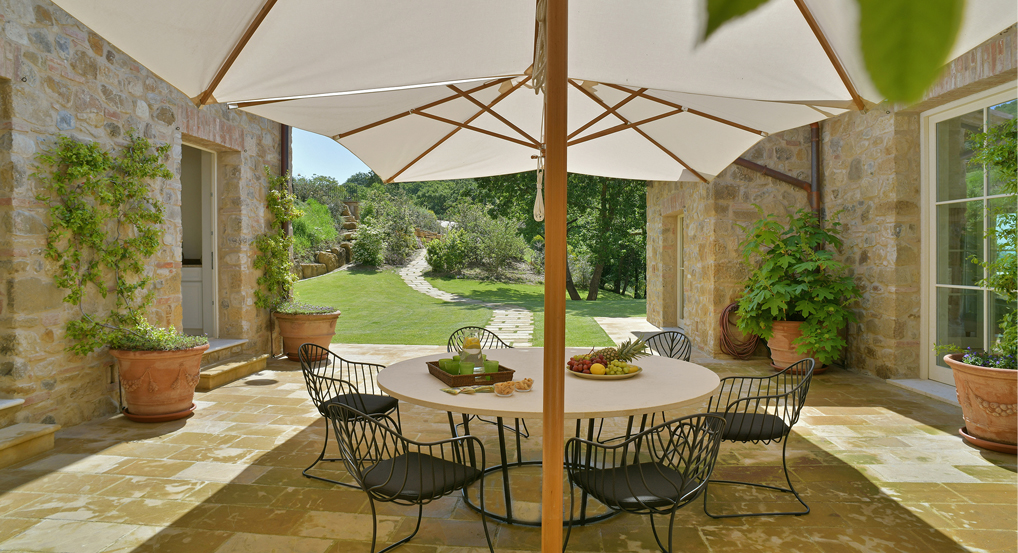
The same for the dining area just outside, perfect for a dinner "al fresco".
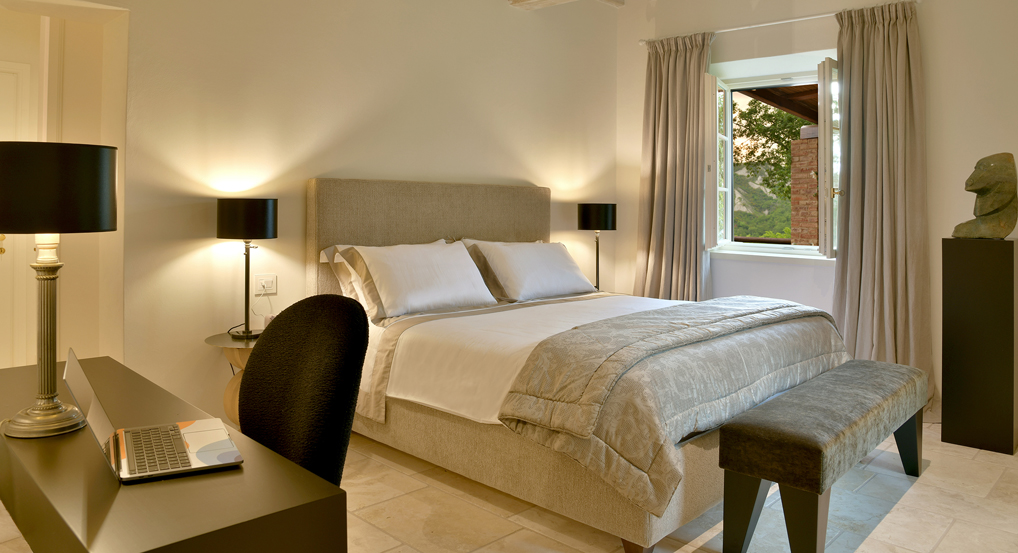
The ground floor Bedroom I has a king sized bed and en suite bathroom with walk-in shower, Wash basin and WC.

Arriving upstairs, the landing displays some of the modern artwork collected by the owners.
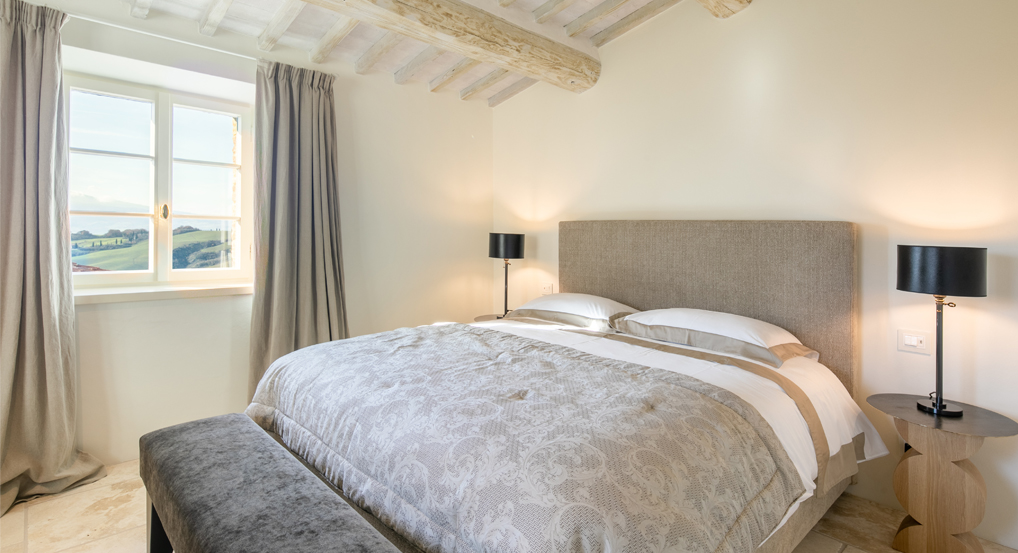
Bedroom II has a king sized bed and en suite bathroom with walk-in shower, Wash basin and WC.

All of the bedrooms have views which are truly to write home about.
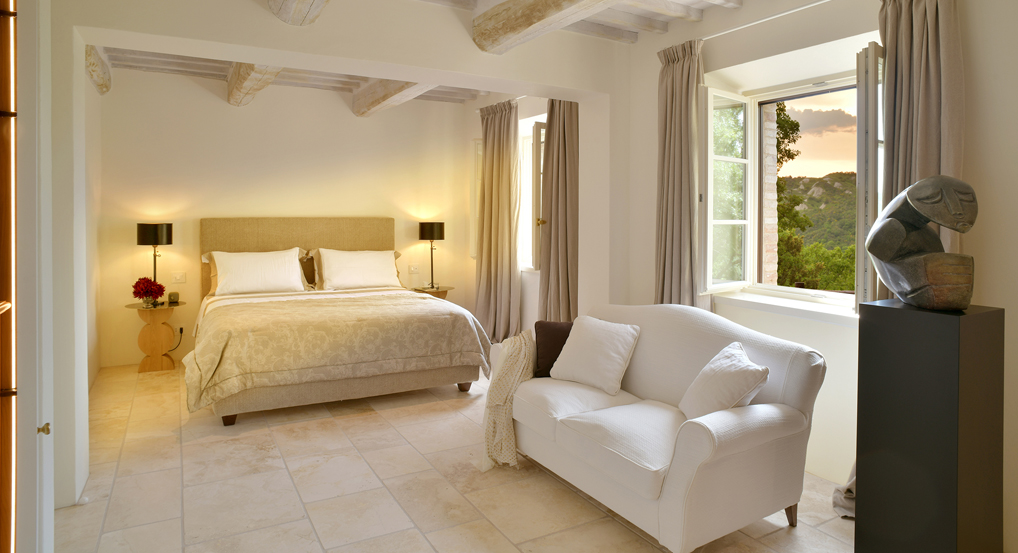
Bedroom III is a corner room overlooking the valley and offers a larger space with a sofa.
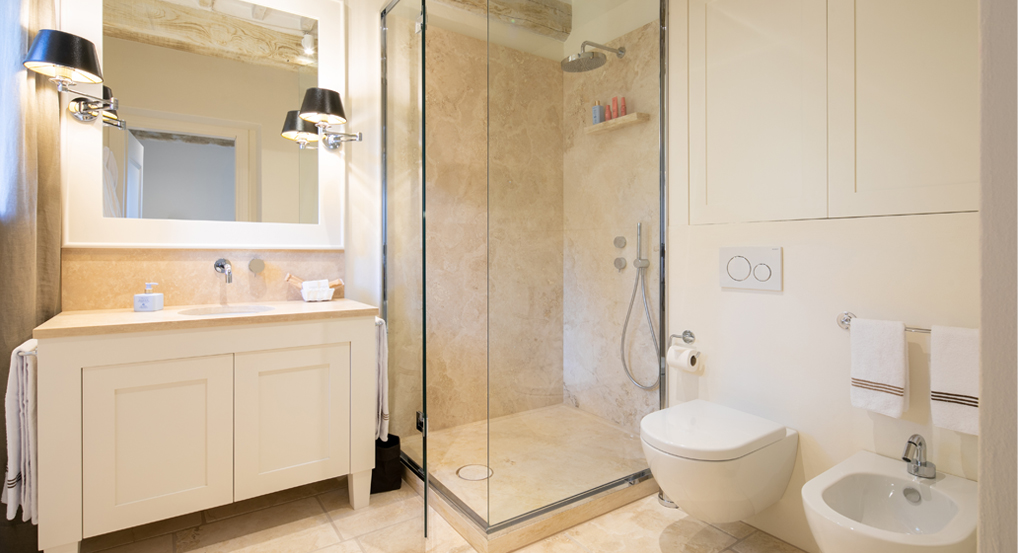
Each bedroom has it's own bathroom designed for comfort along with custom fitted closets.
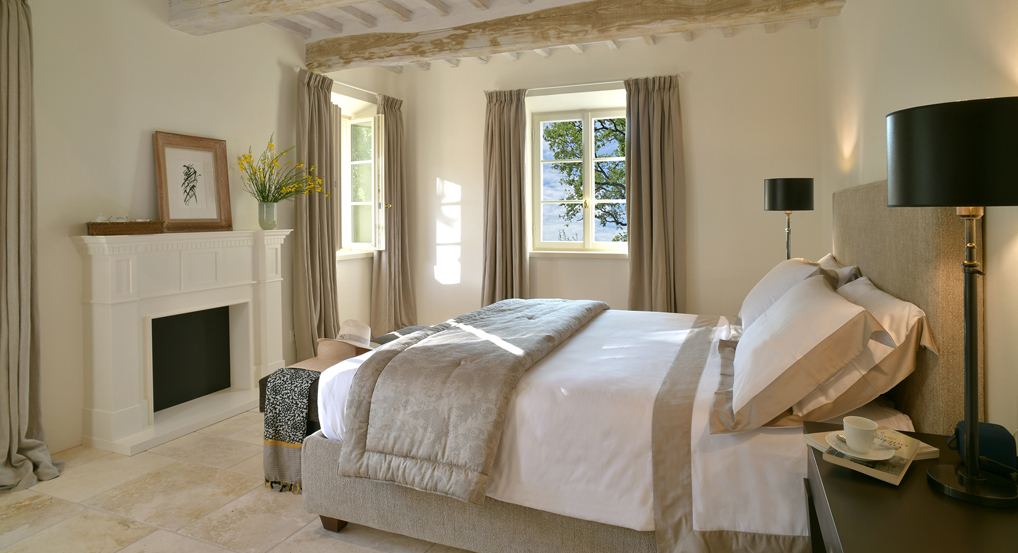
The spacious Bedroom IV is the Master, which has views of the courtyard and valley.
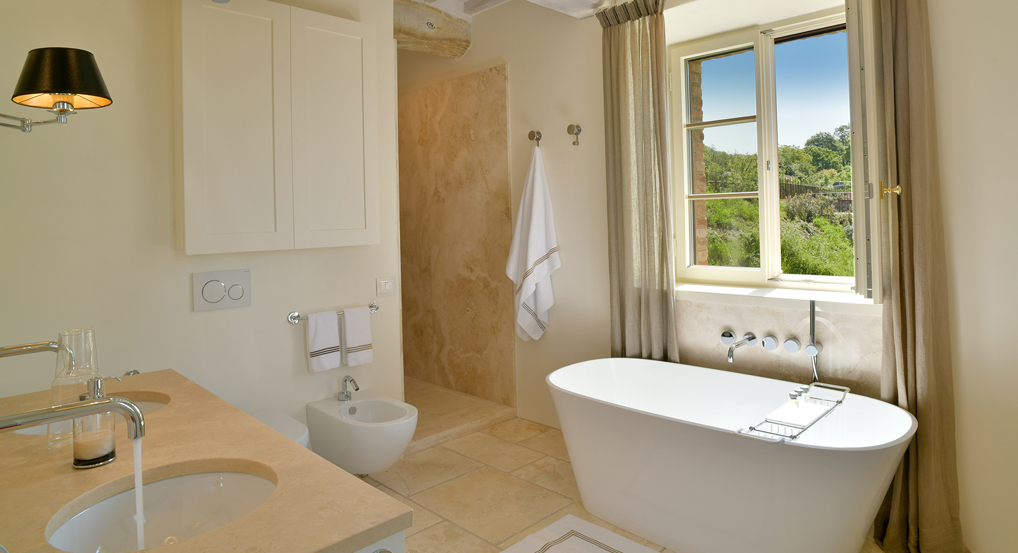
The Master Bathroom has a large walking shower in Travertine marble as well as a freestanding tub.
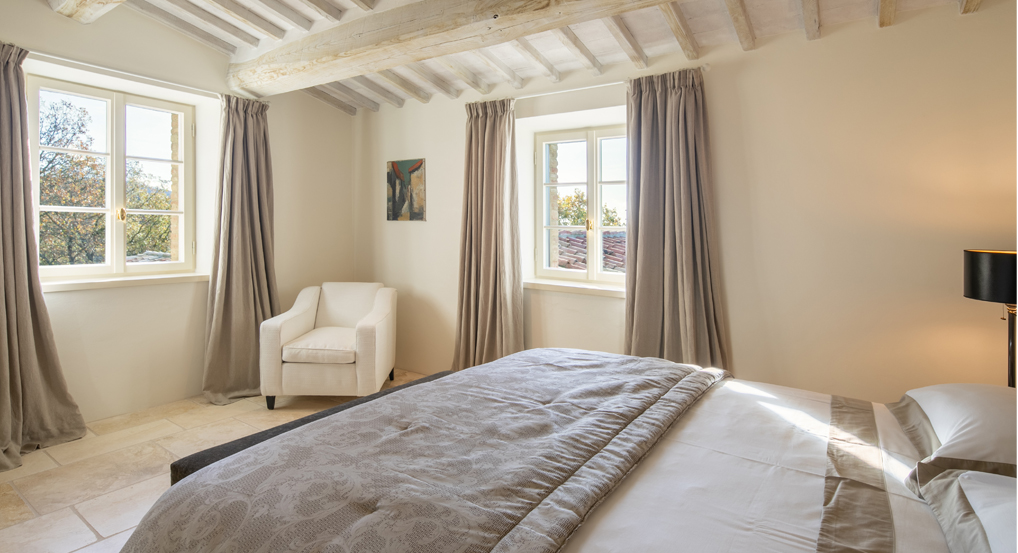
Bedroom V is also a corner room with en suite bath overlooking the pool area.
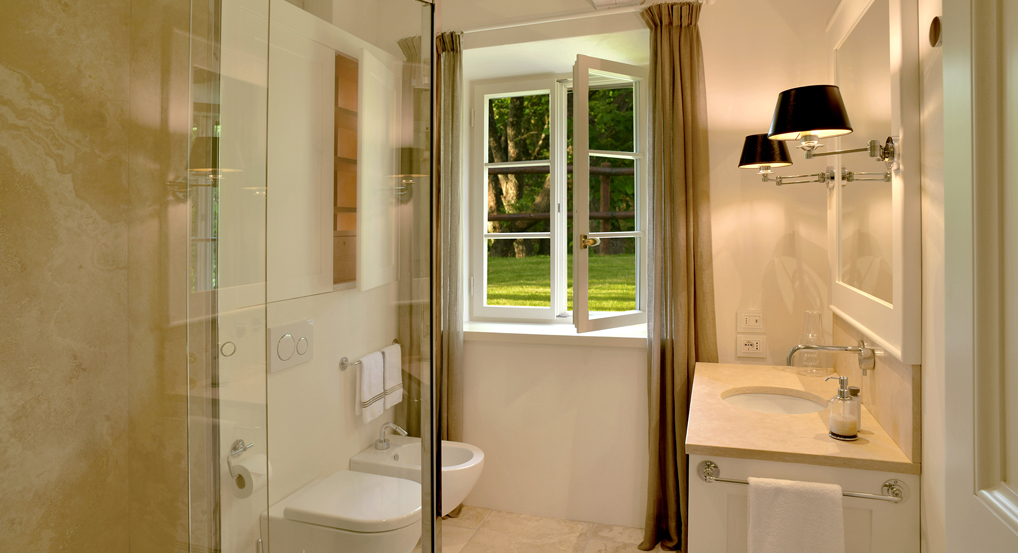
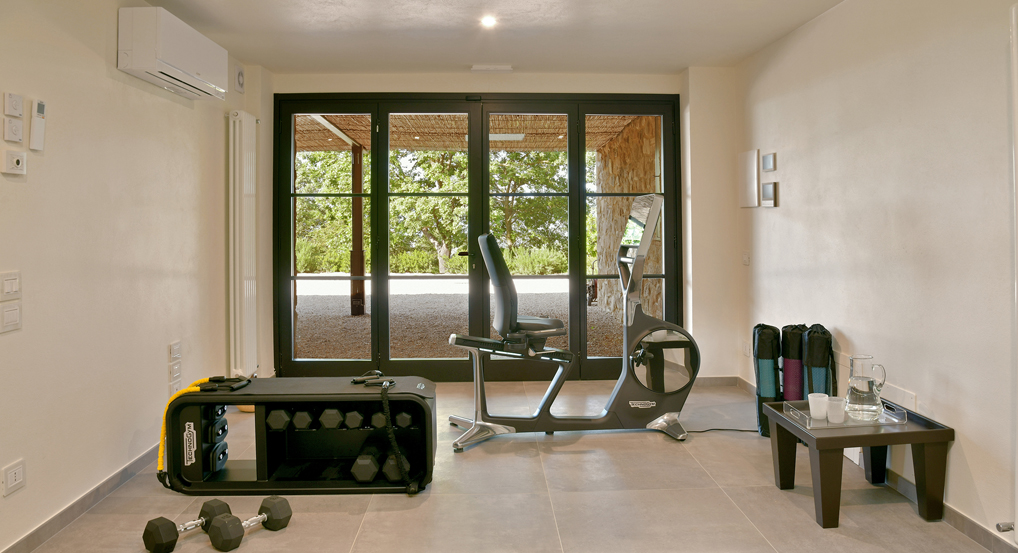
A home gym with Technogym equipment and weight system is located under the outdoor pool.
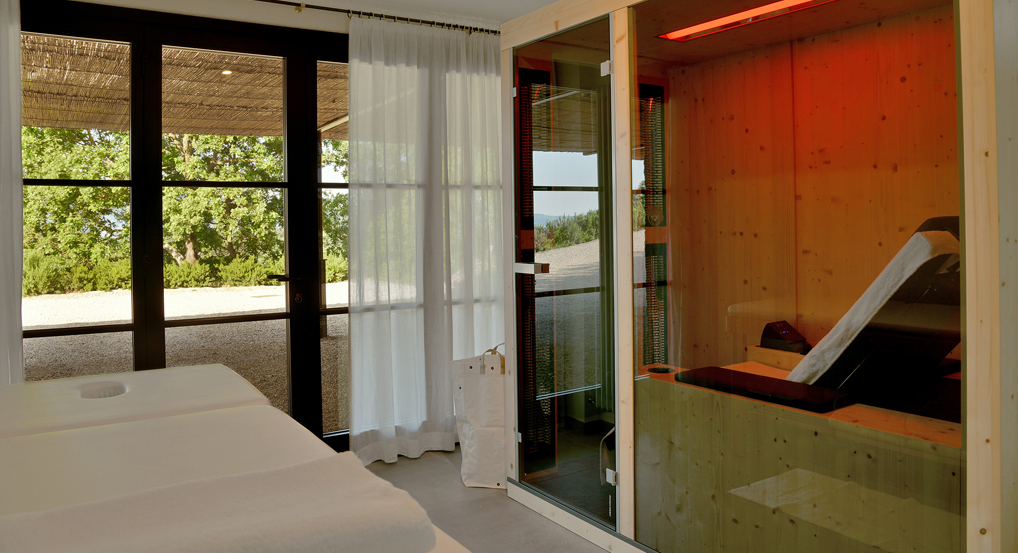
The gym is also equipped with an infrared sauna and has a full bathroom with shower.
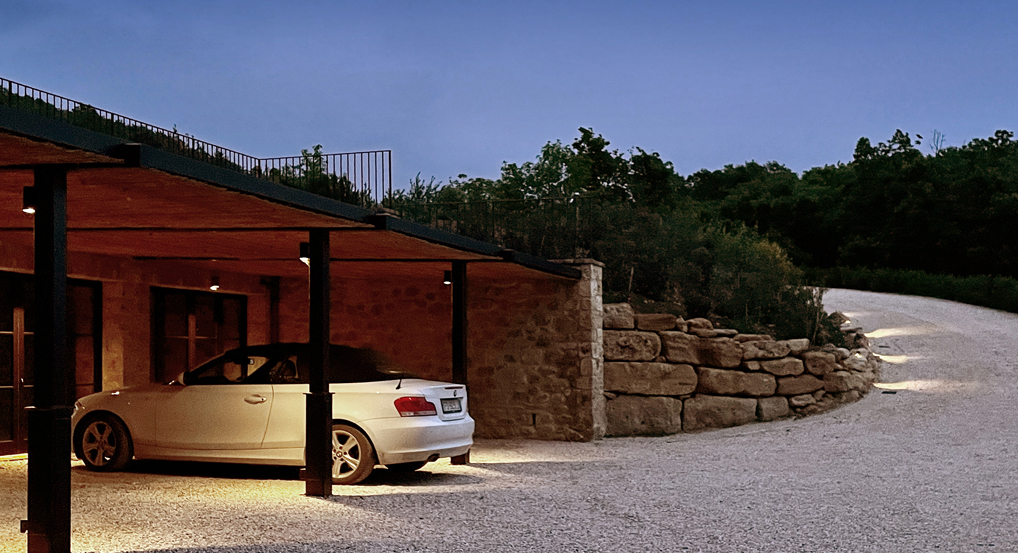
Several covered parking spaces are close to the villa. entrance
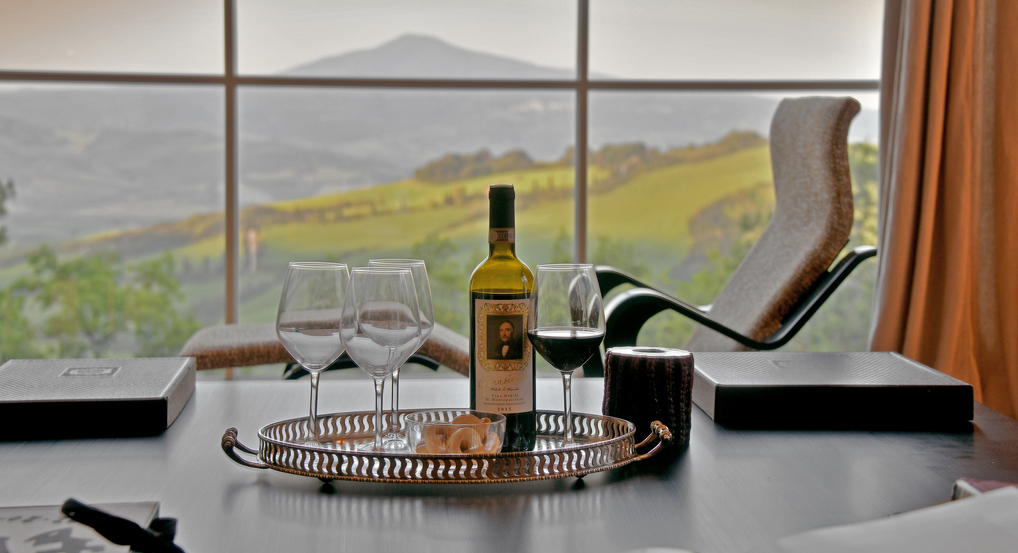
Vino anyone?






